How To Clean And Care For Your Nonstick Pans
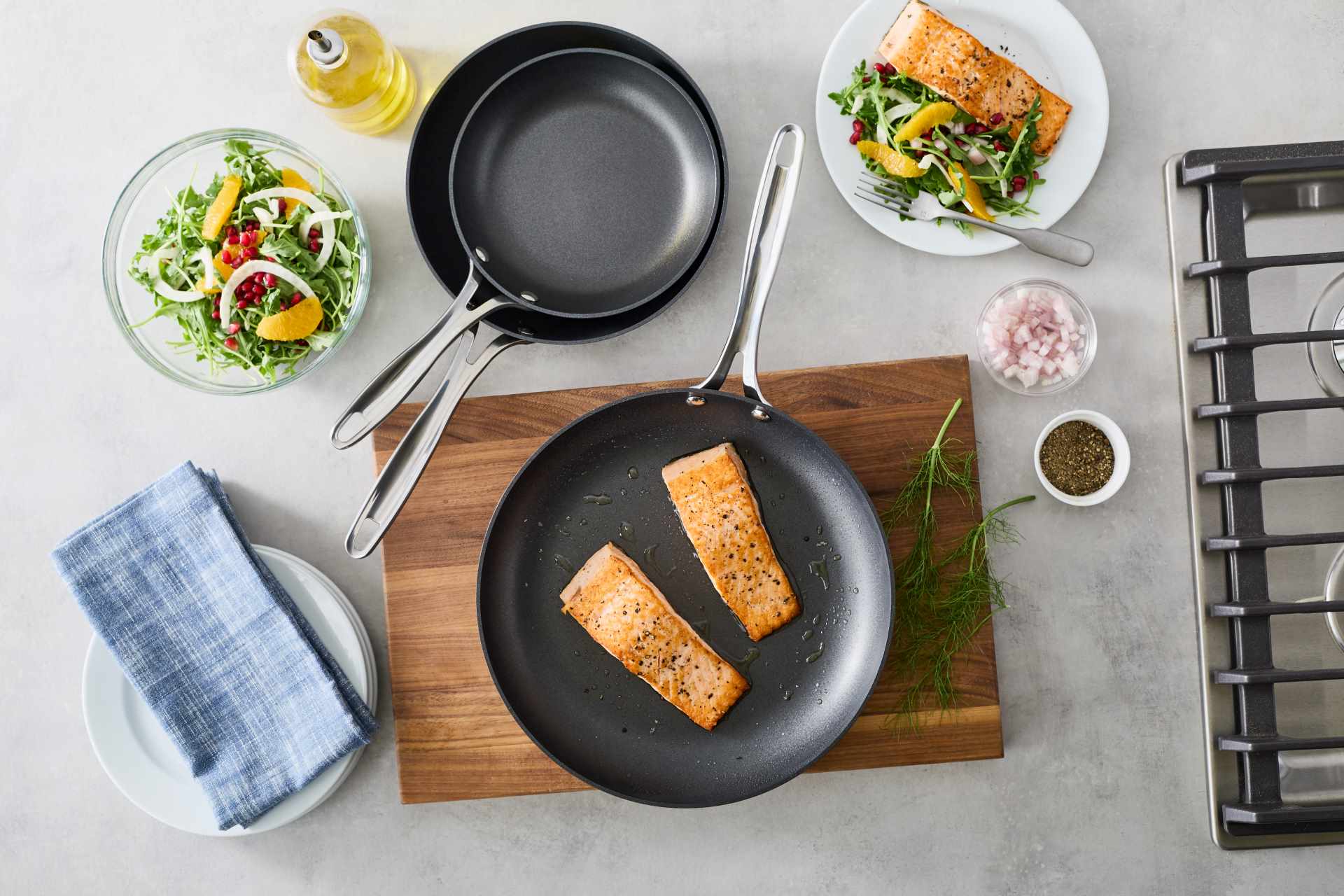
Nonstick pans have revolutionized the cooking world, offering an easy-to-use option for everyone from professional chefs to home cooks. Whether you’re flipping pancakes, sautéing vegetables or searing a delicate piece of fish, nonstick cookware provides a hassle-free cooking experience with minimal cleanup.
But maintaining these pans requires a bit of know-how to ensure they last longer and continue to perform well.
In this guide, we’ll walk you through tips and best practices on how to clean your nonstick pans to keep your cookware in optimal condition, ensuring that every meal you cook is just as enjoyable and successful as the last.
Hungry for more? Expand your kitchen collection with our selection of nonstick cookware from brands you love, like GreenPan, Scanpan, All-Clad and more!
Understanding nonstick pans
First things first, let’s delve a bit deeper into the world of nonstick pans. These pans are often coated with materials like PTFE (Teflon) or ceramic, creating that magical surface where food slides right off. But this superpower is also their point of vulnerability.
Unlike the more robust stainless steel cookware, nonstick pans have a sensitive surface that can easily be damaged by high heat, abrasive cleaning tools or harsh chemicals. Understanding this distinction is key to preserving the nonstick quality of these pans, ensuring they remain a valuable, functional asset in your kitchen for as long as possible.
Everyday cleaning tips
The true secret to the longevity of your nonstick pot and pans lies in the daily care they receive. While nonstick surfaces simplify the cooking process, they demand a gentle and mindful cleaning approach to maintain their magic. From the right temperature to the ideal cleaning tools, here’s some tips and best practices that promise to extend the life of your nonstick pans, keeping them as reliable and efficient as the day you first used them.
- Let the pan cool: Always, always allow the pan to cool completely before cleaning. Immersing a hot nonstick pan in cold water can cause it to warp. Whether you’re using a traditional nonstick pan or ceramic nonstick cookware, warping can lead to uneven cooking, instability on the cooktop and potential damage to the nonstick coating.
- Use gentle cleaning tools: To protect the nonstick surface, use a soft sponge or cloth. Avoid using abrasive scrubbers or steel wool, as these can scratch and damage the coating.
- Stick to a mild detergent: A mild dish soap and warm water are usually sufficient for cleaning. Harsh detergents can degrade the nonstick coating over time.
- Hand wash for longevity: While some nonstick pans are labeled as dishwasher safe, it’s best to hand wash them. The high heat and harsh detergents in a dishwasher can shorten the life of your pan.
- Dry thoroughly: After washing, dry your pan thoroughly with a soft towel to prevent water spots and rusting (if there are any exposed metal areas).
Why is a scratched surface on nonstick cookware problematic?
A scratched nonstick pan is problematic because the scratches can compromise the integrity of the nonstick coating. This degradation leads to two main issues:
- Loss of nonstick properties: Scratches expose the underlying material, usually metal, which reduces the pan’s nonstick effectiveness. Food starts to stick in these areas, negating the primary benefit of such cookware—and making both cooking and cleaning more difficult.
- Potential health concerns: If the nonstick coating is made of materials like PTFE, continued use of a scratched pan can lead to these materials flaking off into your food. While modern nonstick coatings are generally safe and stable at cooking temperatures, ingesting flakes of these materials is not advisable. Additionally, if the coating degrades significantly due to scratches, it might start to release toxic fumes when heated to high temperatures, posing a potential health risk.
Dealing with stuck-on food
In an ideal world, food would effortlessly glide off the surface of our nonstick pans every time we cook, but even the best nonstick surfaces can sometimes face the sticky challenge of food residue. Factors like cooking temperature, food type and the age of the pan can lead to situations where food stubbornly clings on.
Luckily, there are effective and safe methods to clean off stuck-on food, ensuring your pan remains in pristine condition without compromising its nonstick quality. Here are a few tips:
- Soak if necessary: If food is stuck on the pan, soak it in warm, soapy water for a while before cleaning. This will loosen most food particles.
- Use a non-abrasive scrubber: For tougher residues, use a non-abrasive scrubber like a nylon brush or a sponge specifically designed for nonstick surfaces.
- Avoid harsh chemicals: Never use oven cleaners or other harsh chemicals to clean your nonstick pans.
Maintenance tips
While daily cleaning is crucial for your nonstick pans, there’s another dimension to their care: thoughtful maintenance. This goes beyond the regular wash-up after a meal; it’s about the ongoing practices that safeguard the longevity and effectiveness of your nonstick cookware.
- Avoid high heat: High heat can damage the nonstick coating. Cook on low to medium heat settings.
- Use the right utensils: Avoid using metal utensils, which can scratch the surface. Instead, opt for wood, silicone or plastic utensils.
- Store carefully: Store your pans properly to avoid scratches. If you must stack them, place a layer of paper towel or a pan protector between each pan.
- Inspect it regularly: Periodically check the pan for scratches, chips or any peeling. If the coating is damaged, it’s time to replace the pan.
When to replace your nonstick pan
No nonstick pan lasts forever. The lifespan depends on the quality of the pan and how well it’s cared for. As a general rule, if you start noticing that food sticks to the pan or if the coating shows significant wear, it’s time for a replacement.
Hungry for more? Expand your kitchen collection with our selection of nonstick cookware from brands you love, like GreenPan, Scanpan, All-Clad and more!

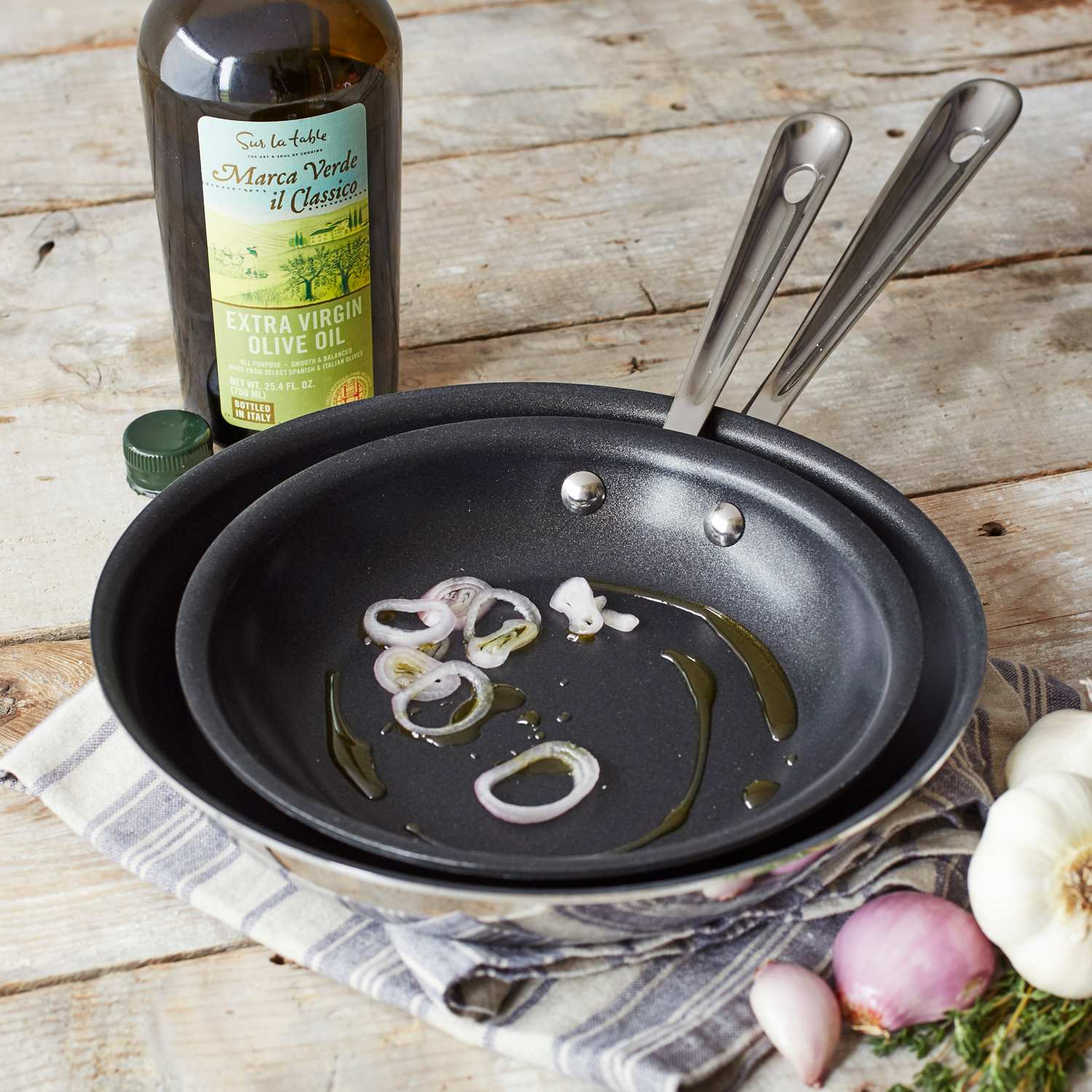
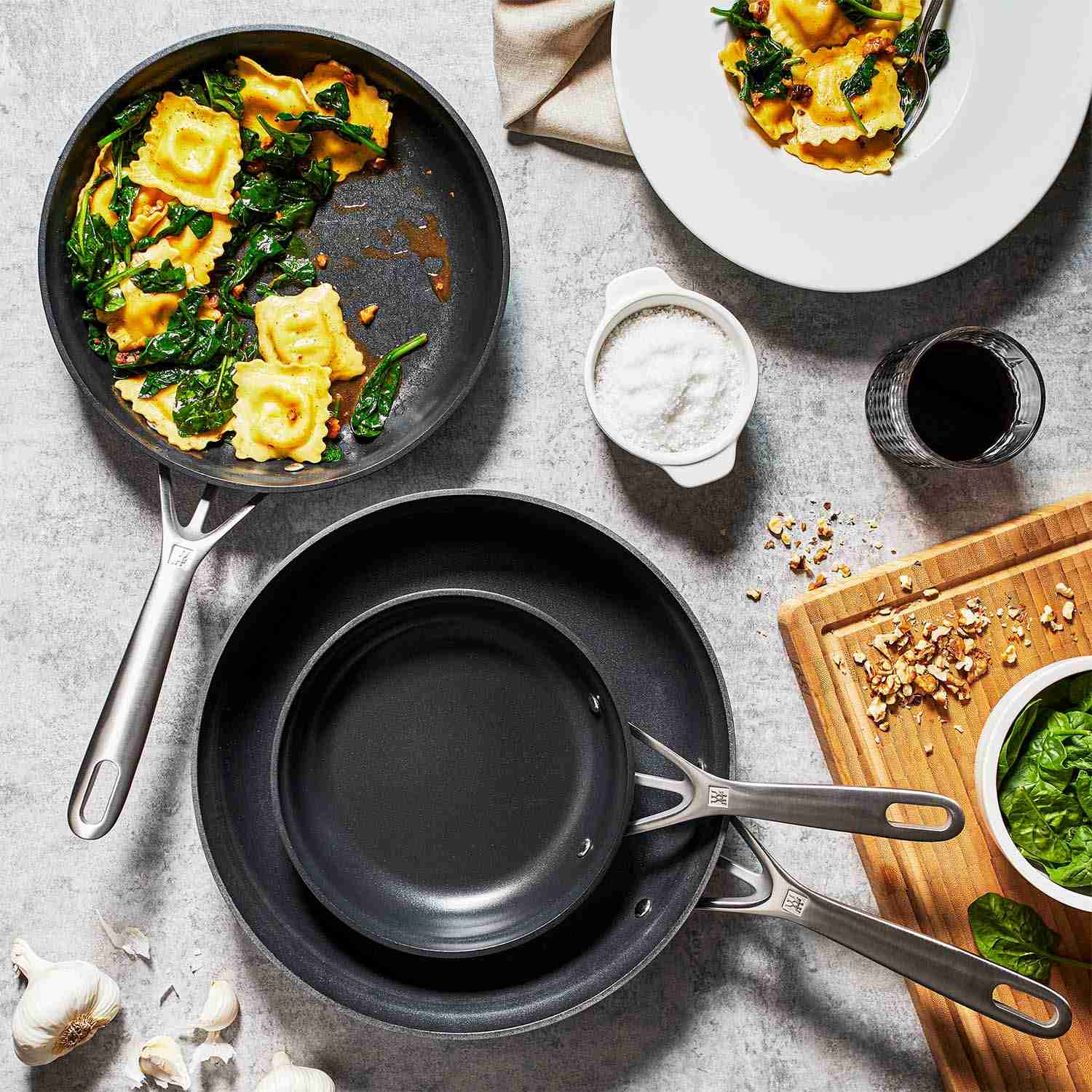
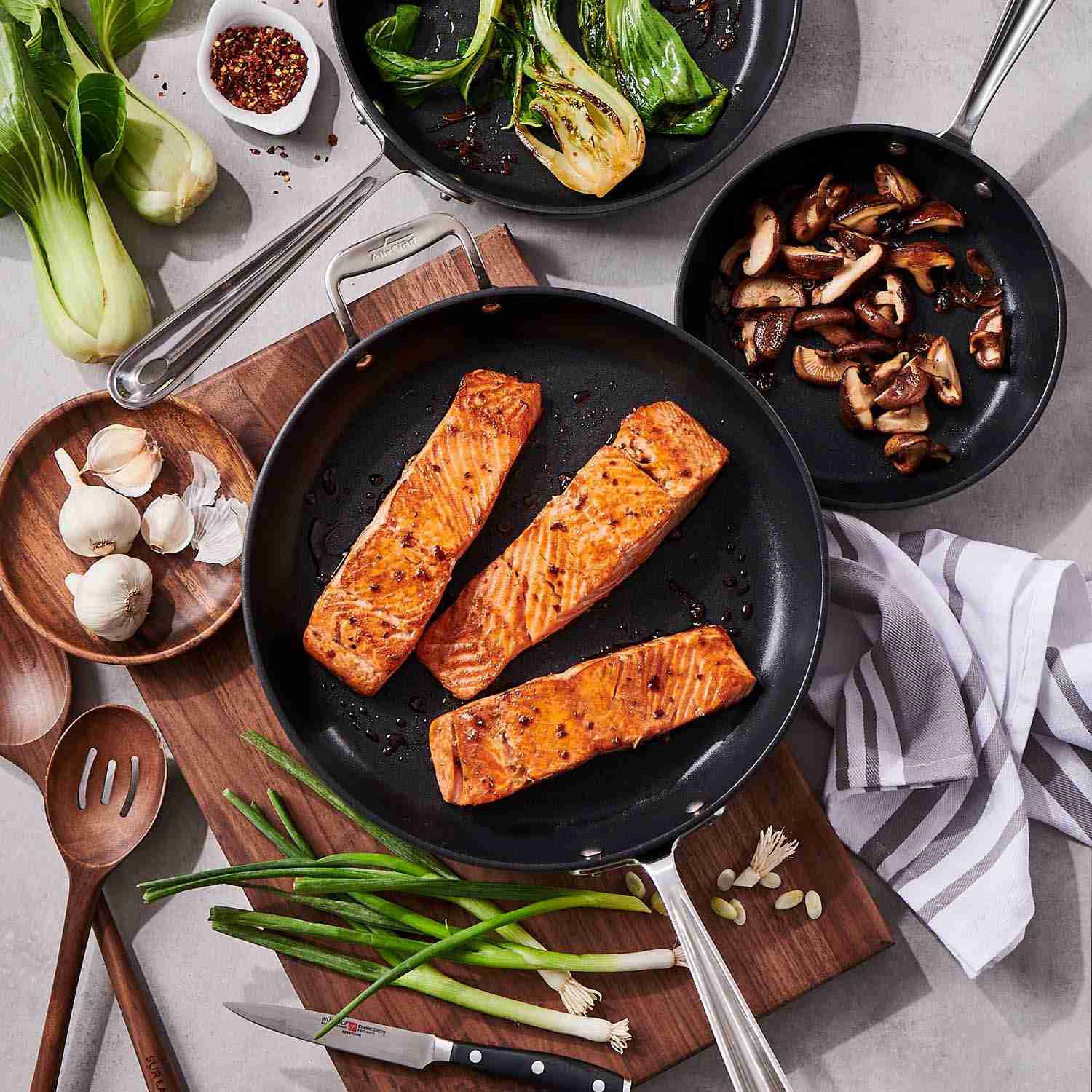
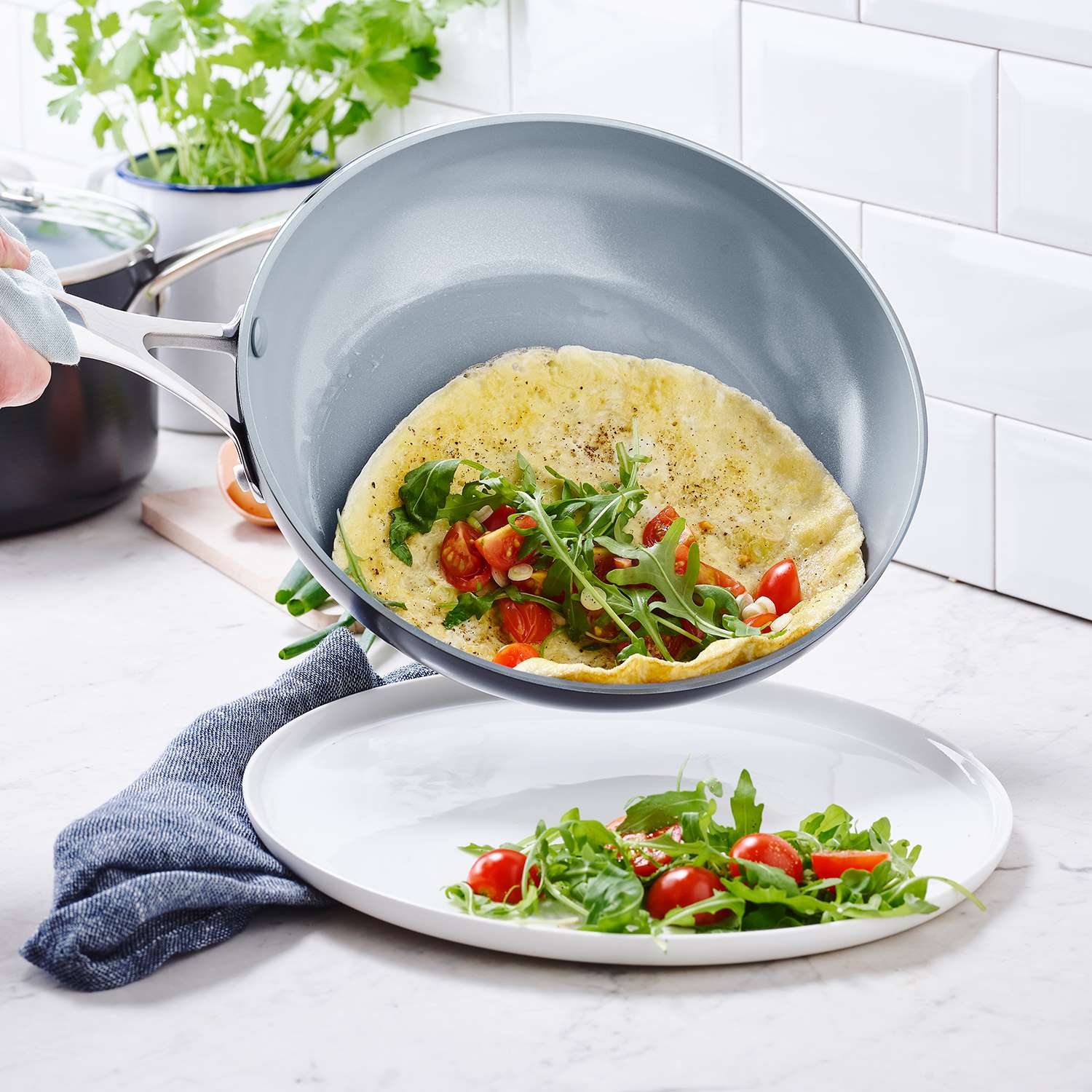
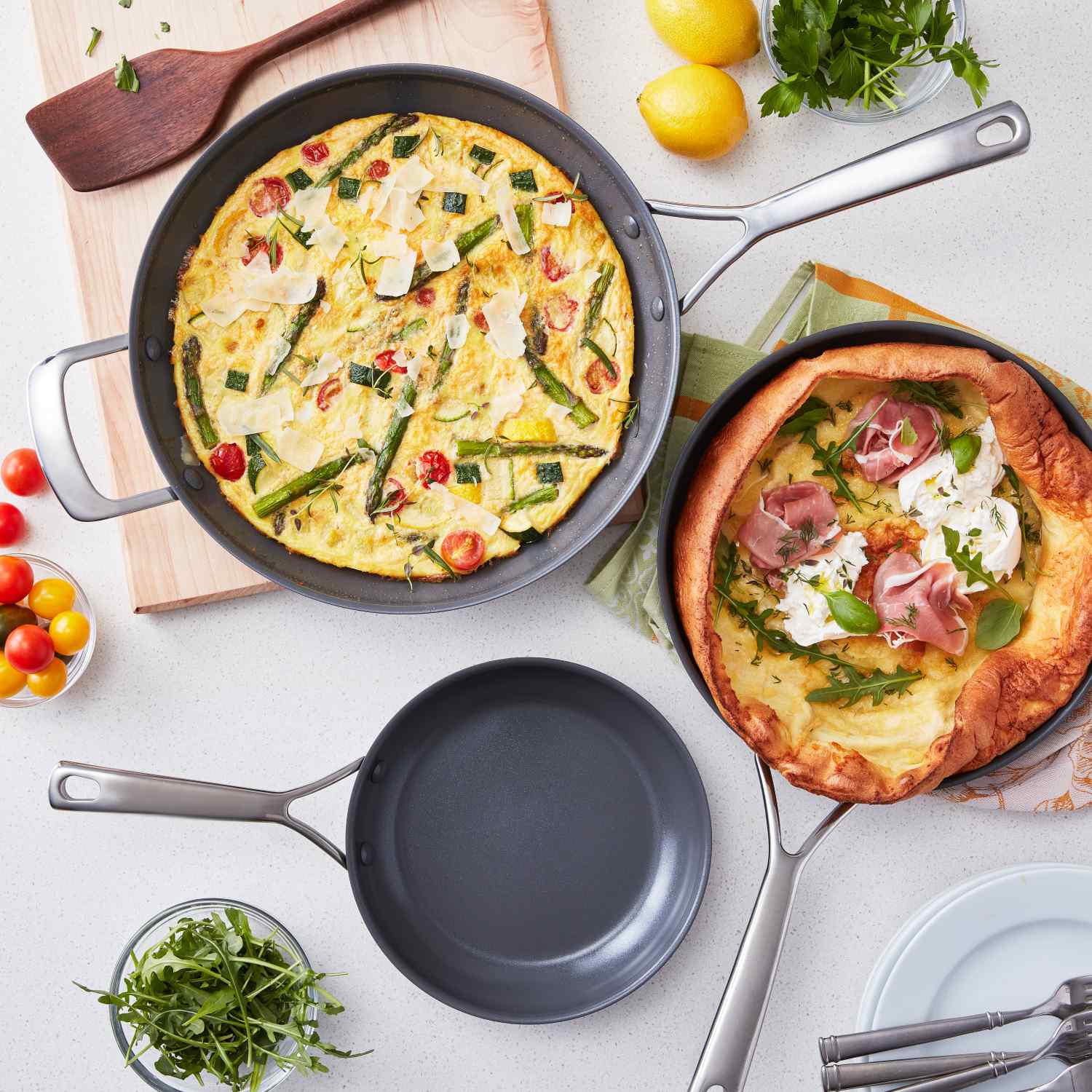
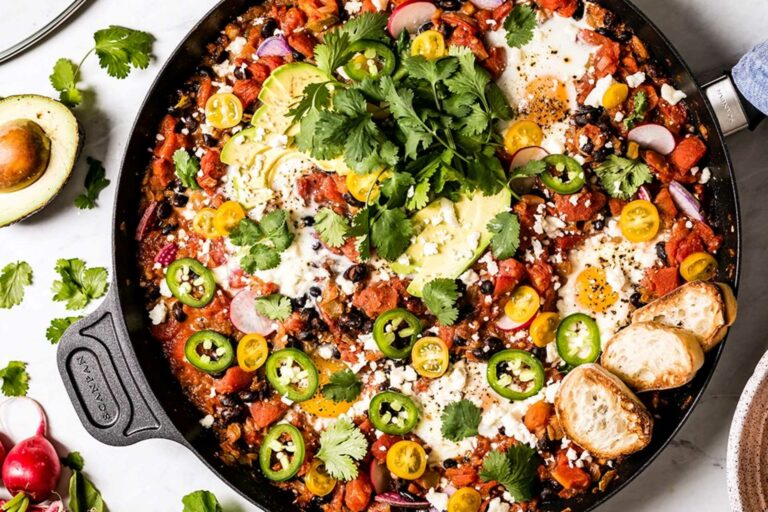

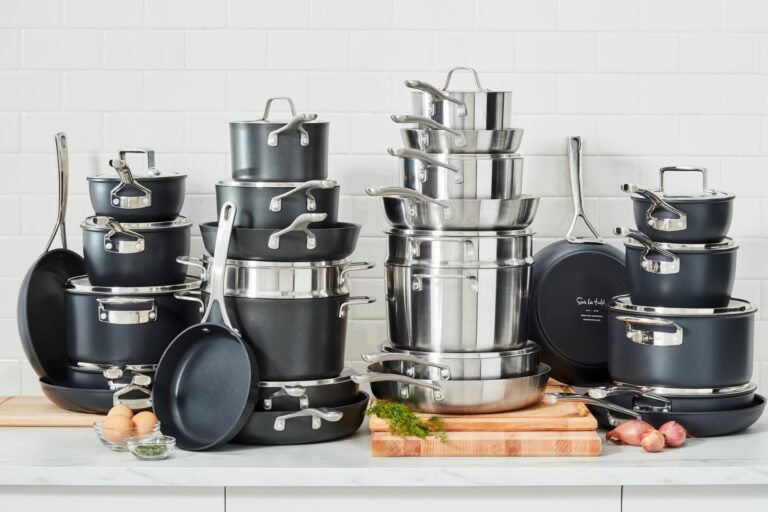
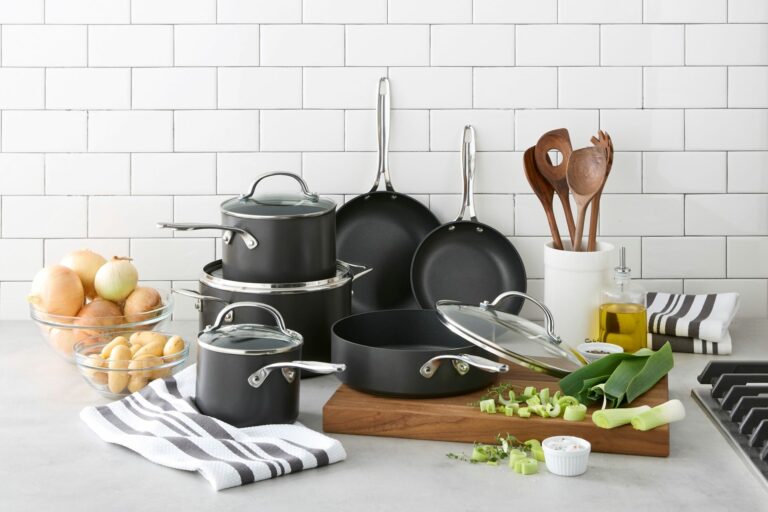
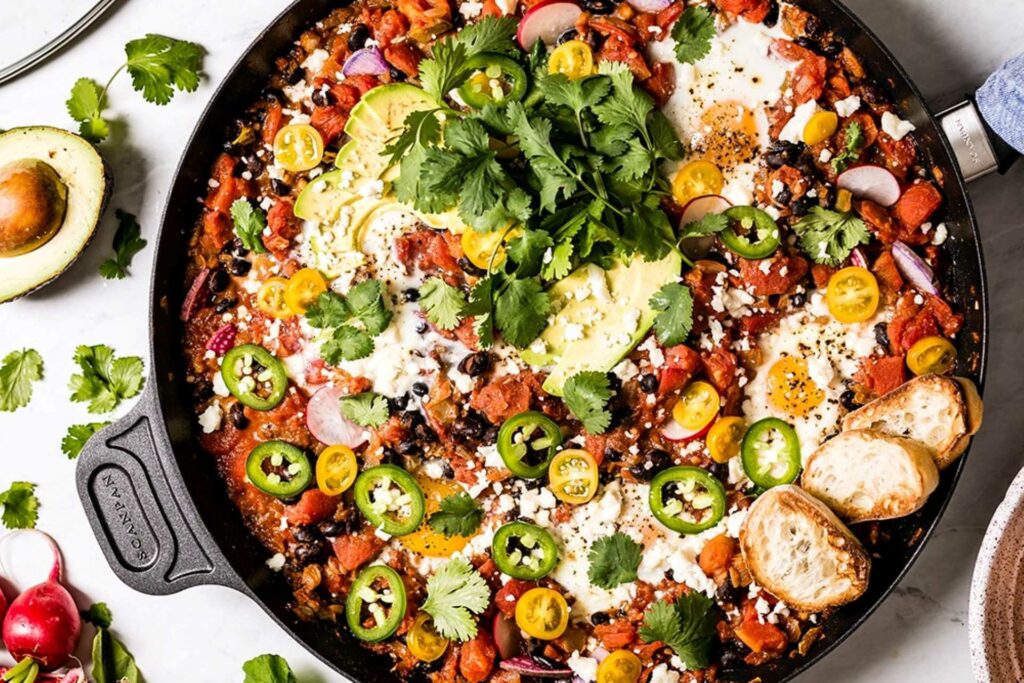
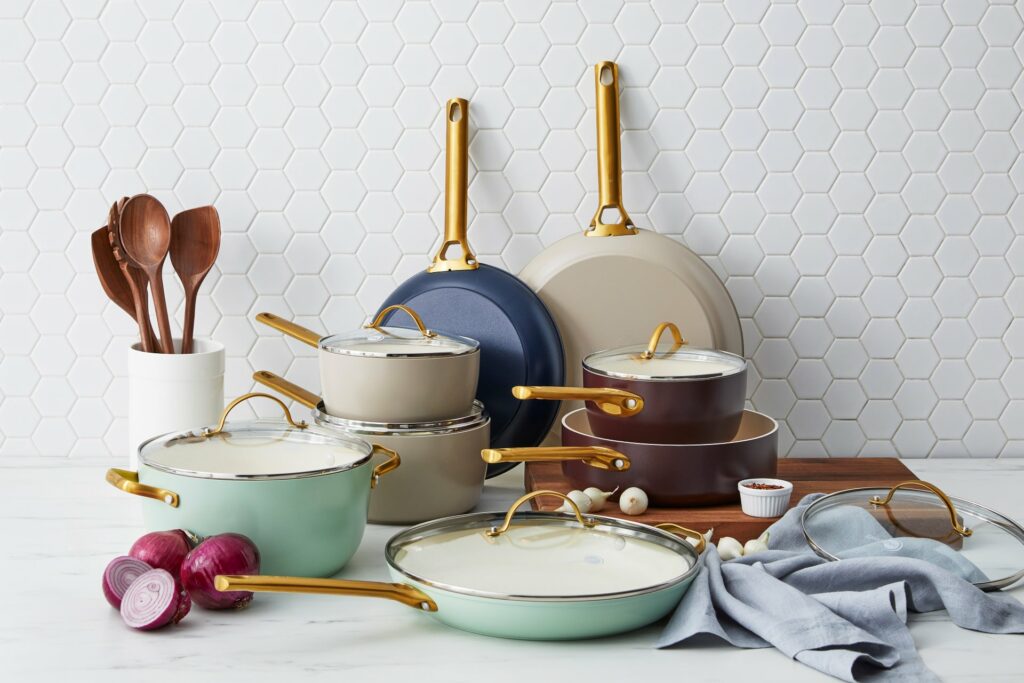
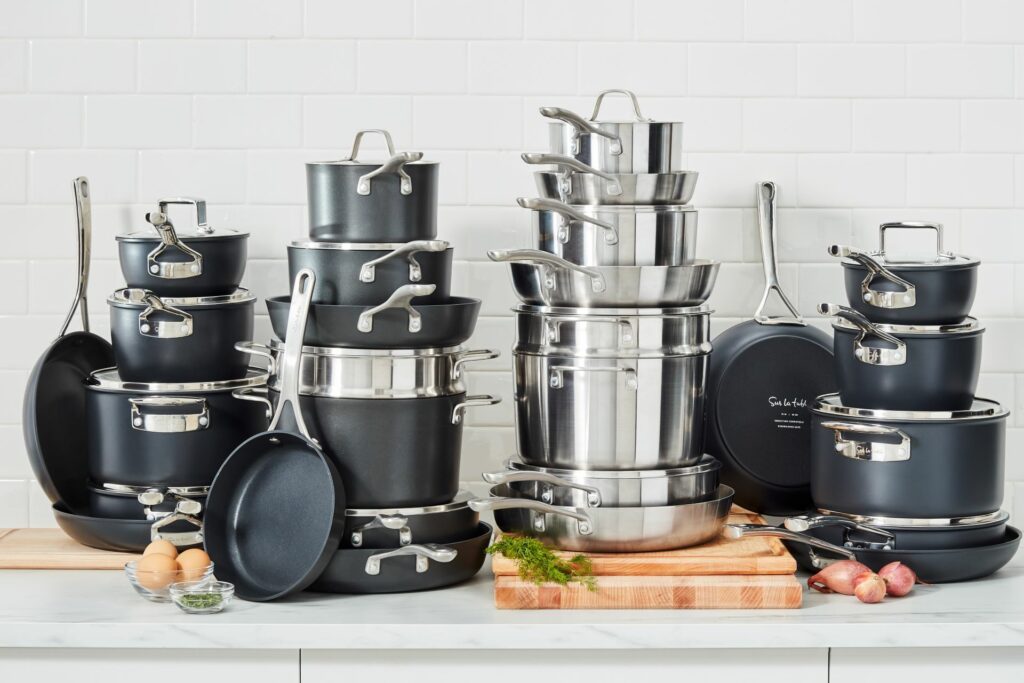
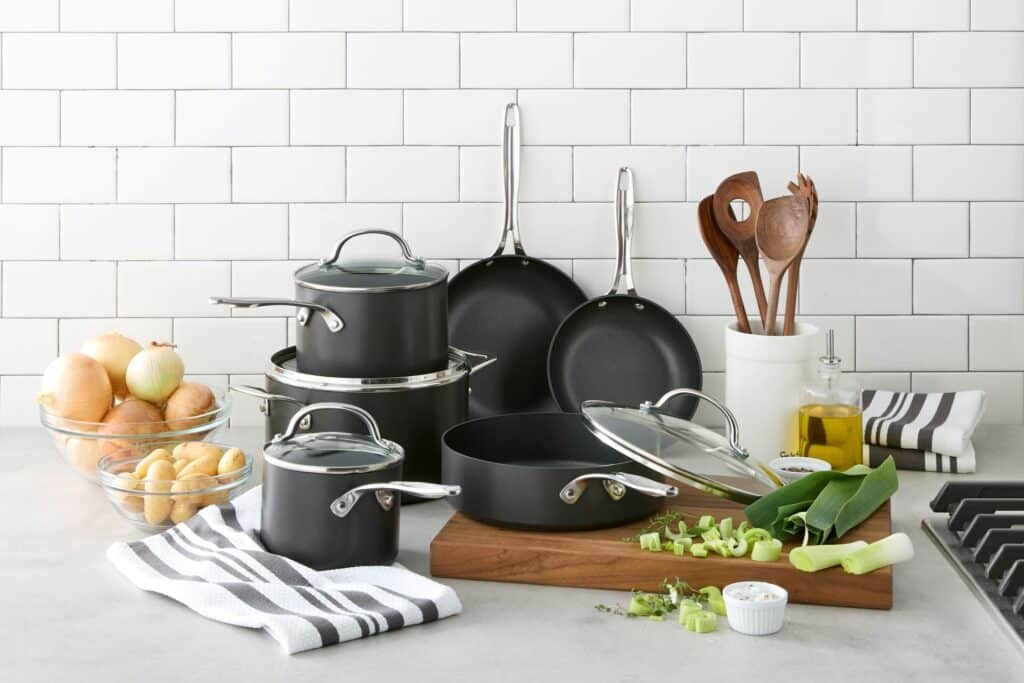
Can you use dawn dish detergent on 10 inch non stick pan